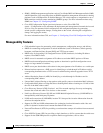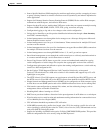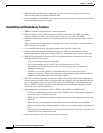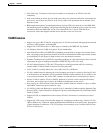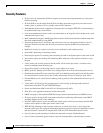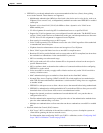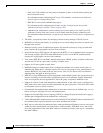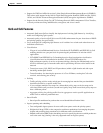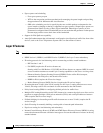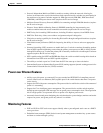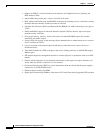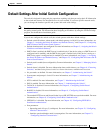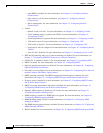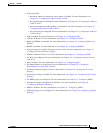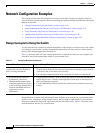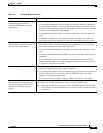
1-14
Catalyst 3750 Switch Software Configuration Guide
OL-8550-09
Chapter 1 Overview
Features
• Egress queues and scheduling
–
Four egress queues per port
–
WTD as the congestion-avoidance mechanism for managing the queue lengths and providing
drop precedences for different traffic classifications
–
SRR as the scheduling service for specifying the rate at which packets are dequeued to the
egress interface (shaping or sharing is supported on egress queues). Shaped egress queues are
guaranteed but limited to using a share of port bandwidth. Shared egress queues are also
guaranteed a configured share of bandwidth, but can use more than the guarantee if other queues
become empty and do not use their share of the bandwidth.
• Support for IPv6 QoS trust capability.
• Auto-QoS enhancements that add automatic configuration classification of traffic flow from video
devices, such as the Cisco Telepresence System and Cisco Surveillance Camera.
Layer 3 Features
Note Some features noted in this section are available only on the IP services image.
• HSRP Version 1 (HSRPv1) and HSRP Version 2 (HSRPv2) for Layer 3 router redundancy
• IP routing protocols for load balancing and for constructing scalable, routed backbones:
–
RIP Versions 1 and 2
–
Full OSPF (requires the IP services feature set)
Starting with Cisco IOS Release 12.2(55)SE, the IP base feature set supports OSPF for routed
access to enable customers to extend Layer 3 routing capabilities to the access or wiring closet.
–
Enhanced Interior Gateway Routing Protocol (EIGRP) IPv6 to utilize IPv6 transport,
communicate with IPv6 peers, and advertise IPv6 routes
–
HSRP for IPv6 (requires the IP services image)
–
Border Gateway Protocol (BGP) Version 4 (requires the IP services image)
• IP routing between VLANs (inter-VLAN routing) for full Layer 3 routing between two or more
VLANs, allowing each VLAN to maintain its own autonomous data-link domain
• Policy-based routing (PBR) for configuring defined policies for traffic flows
• Multiple VPN routing/forwarding (multi-VRF) instances in customer edge devices to allow service
providers to support multiple virtual private networks (VPNs) and overlap IP addresses between
VPNs (requires the IP services image)
• Fallback bridging for forwarding non-IP traffic between two or more VLANs (requires the IP
services image)
• Static IP routing for manually building a routing table of network path information
• Equal-cost routing for load balancing and redundancy
• Internet Control Message Protocol (ICMP) and ICMP Router Discovery Protocol (IRDP) for using
router advertisement and router solicitation messages to discover the addresses of routers on directly
attached subnets



